As promised, here are some samples of my own fractals.
Of course, when I started painting this way I didn’t know they were fractals. At a memorable Thanksgiving dinner years ago, during a break from a heated discussion with our dad, I was accused by my brother of being socio-politically irresponsible, (he was a pre-law, political science major). I replied that I would be happy to talk about impressionist color theory. He said he didn’t know anything about it, and I said, I can’t stop thinking about it, ........ all the time, .......which is why I don’t have time for politics.
I thought about it while I was fishing, which I did a lot of then, driving to school, to work. And it pulled me deeper into the landscape, where it seemed more obvious, more apparent. Or was I just happier outside, so I was able to see it all easier there. At the time I was studying water color. I was, and still am a big fan of Winslow Homer’s watercolors, and really wanted his life - well, except for the part about living alone an the coast of Maine. I love being married.
How’d I get from fractals to waxing on about being married? Hmmmmm, Valentine's Day.
Watercolor. I love Homer’s, but slowly realized I was never going to be the next Homer. Or Sargent - he painted some killer watercolors, too. But I am not a painter of the flourishy stroke. After years and years of painting, I have realized I paint the same way I talk. I throw something up there, see how it looks, then I adjust it, ad to it, restate it. I started doing this with watercolor working wet over dry, scrubbing a lot, so I could build texture. Then went to pastel to work opaque, as preparation for working in oil. And got sidetracked for several years with pastel. When I finally returned to oil painting, I thought, What have I been doing, I’m an oil painter. And look at all these fractals I can make.
OK, I still didn’t know a fractal from fructose. But I’d been working with a variety of media, building layers of texture, at some point recognizing that I had started thinking of representing light and form with veils of color. Sometimes translucent veils, some times opaque, broken veils. Cool over warm, warm over cool. Sometimes layering complements, more often tertiary complements or analogous colors. Sometimes really intense colors, sometimes subdued. Trying to produce the texture I see and feel in the atmosphere, and in the world. And it turns out those layers produce fractals. The texture of light and color defining form. The texture that makes me feel connected to my life.
These last fractals are much more pronounced. The painting is the largest piece I've ever done, about 9 feet wide. And it's not finished yet.We'll see how the fractals go.




